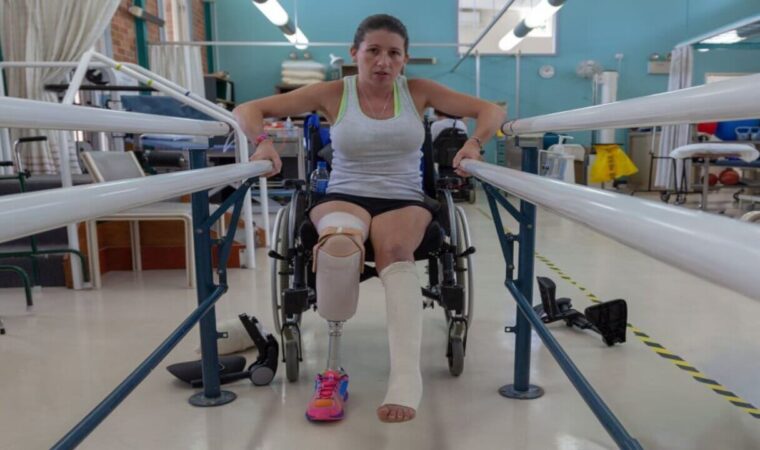
There is no fixed formula or method for calculating the monetary value of pain and suffering in North Carolina personal injury claims. If you got injured because of someone else’s negligence, you could benefit from partnering with the team at Whitley Law Firm.
We have decades of experience advocating for injured people and calculating their pain and suffering. To learn more about our client-centered care, call (919) 785-5000. With our team’s help, you could recover more than the cost of your pain and suffering; you could recoup the full cost of your injury-related losses.
No Fixed Formula for Calculating Pain and Suffering Damages in North Carolina
Many other states use formulas to determine how much compensation to award for pain and suffering in personal injury cases, but here in North Carolina, we have our own way of doing things. Instead of using a formula or equation, we expect the judge and jury to use common sense to determine the fair financial value of a plaintiff’s non-economic losses.
The judge and jury are supposed to evaluate how the accident and their injuries have impacted the injured person’s life. Some of these effects happen at the moment of the crash, while others develop and continue well after the collision.
Your Lawyer May Employ These Formulas to Learn What You Need
The two most common methods to calculate the amount of pain and suffering are the multiplier method and the per diem method. Your lawyer may not use these methods, yet, it helps to understand what they are.
Multiplier methods take the total economic damages (like medical bills and lost wages) that the plaintiff incurred because of the accident and multiply them by a certain number––usually between 1.5 and five. For example, a person with $50,000 in medical bills and $20,000 in lost wages will receive an additional $280,000 for pain and suffering if the jury uses a multiplier of four.
With a per diem method, the jury multiplies the number of days the patient was in physical pain or experienced some other adverse result from the accident by a daily rate. For example, a daily rate of $1,000 applied to one year will result in pain and suffering worth $365,000.
There Is No Cap on Pain and Suffering in North Carolina
There is no cap or limitation on the amount of pain and suffering you can pursue after a collision, fall, or the loss of a loved one. Yet, the state limits pain and suffering in medical malpractice cases. In these situations, the jury is not allowed to award more than $500,000 in pain and suffering.
Yet, per North Carolina law, there is an exception to this rule. If the defendant’s actions were intentional, malicious, reckless, fraudulent, or grossly negligent, the jury is allowed to award more than $500,000.
Factors That Can Affect How Much You Can Seek for Pain and Suffering
The jury is supposed to evaluate how the accident and injuries affected the plaintiff’s life. Factors that can affect an injured person’s quality of life can include:
- Severe injuries. A catastrophic injury, like losing a limb, will receive more compensation than bruises or scrapes.
- Invasive or unpleasant treatments of the person’s wounds. If you had to undergo surgery to treat your injuries, the jury will likely have more sympathy than for someone who sprained an ankle that merely needed an elastic bandage for a few days. Having to get metal pins and rods implanted to immobilize an unstable compound fracture is an example of an unpleasant medical procedure.
- How the injury and its residual impairments affect your life. Pain and suffering should reflect how the accident and your wounds changed your life. A parent who can no longer get down on the floor and play with their young children because of permanent loss of mobility or function from a spinal injury has suffered a substantial loss.
A personal injury lawyer from our firm can furnish the evidence needed to support the value of your pain and suffering. We may use statements from your healthcare team, testimony from your loved ones, and your employment records to bolster your claim.
You Can Pursue Damages Aside From Pain and Suffering
After suffering serious injuries in an accident, you could recover other non-economic damages aside from pain and suffering. These compensable losses include:
- Post-traumatic stress disorder (PTSD), a significant condition that can make it difficult for the injured person to support themselves through employment or maintain personal relationships
- Chronic emotional states like depression, anxiety, anger, and mood swings
- Sleep disorders, like insomnia and nightmares
- Chronic headaches or other pain
- Loss of function, strength, or range of motion
- Loss of the enjoyment of life because of limitations imposed by ongoing impairment
- Disability, if you suffer limitations to your mobility (for example)
- Scarring and disfigurement
These are but a few examples of the non-economic losses that your settlement or court award can account for. Your situation may call for other recoverable damages than those listed here.
How to Calculate Economic Losses in a Personal Injury Case
Economic losses are generally easier to determine than non-economic damages because economic damages usually already have financial values assigned to them. Common types of economic losses include medical bills, lost wages, long-term care, and diminished earning capacity. Your lawyer may calculate these items by:
- Consulting with economists and experts in your employment field
- Adding up the values from invoices, bills, and receipts
- Projecting your future care costs
- Reviewing your employment records to evaluate your missed time from work
Your lawyer may employ other methods than those listed here.
You Must Pursue Damages Within the State’s Prescribed Deadline
If you were injured because of someone else’s negligence, you do not want to sit on your right to compensation for too long. Under our state’s laws, you could lose the right to seek monetary damages from the at-fault party if you do not file a lawsuit in time.
The filing deadline, also called the statute of limitations, is three years for personal injury cases under G.S. § 1-52. If your close relative passed away because of someone else’s wrongful act, whether negligent or intentional, G.S. § 1-53 only gives you two years to file a wrongful death lawsuit.
Our firm upholds your right to damages by managing every deadline associated with your case. Yet, we want to learn about your case immediately. That way, we can advocate for what you need and start gathering evidence.
Our Personal Injury Team Seeks the Full Cost of Your Injury-Related Losses
Pain and suffering is not awarded in place of economic damages. Pain and suffering compensation is in addition to getting your economic losses like medical expenses and lost income paid.
If you’re looking for an advocate during this challenging period, reach out to Whitley Law Firm today to get the Whitley Advantage. The Whitley Advantage means that you will get the benefit of our combined experience of more than 80 years and get treated like family. We will truly listen to you and answer your questions.
For compassionate, caring, hard-working representation, you found the right law firm. You can contact us for a free case evaluation with no obligation. We work tirelessly to get our clients every dollar they deserve. Call (919) 785-5000.



